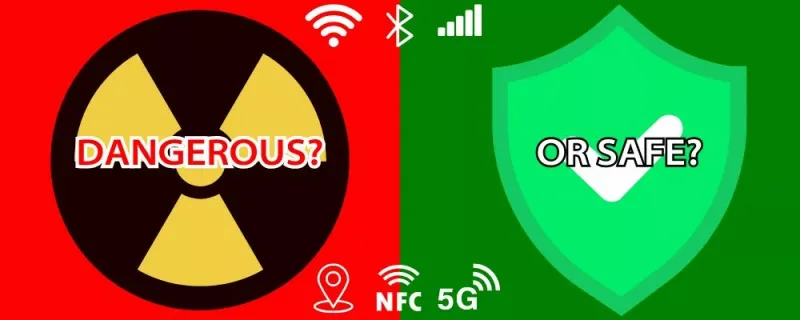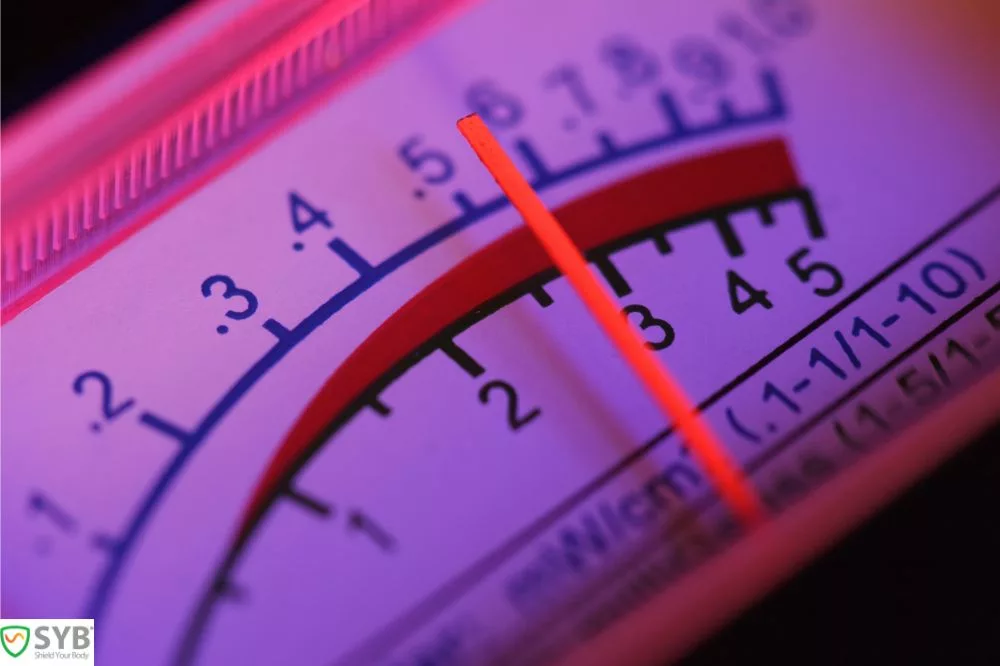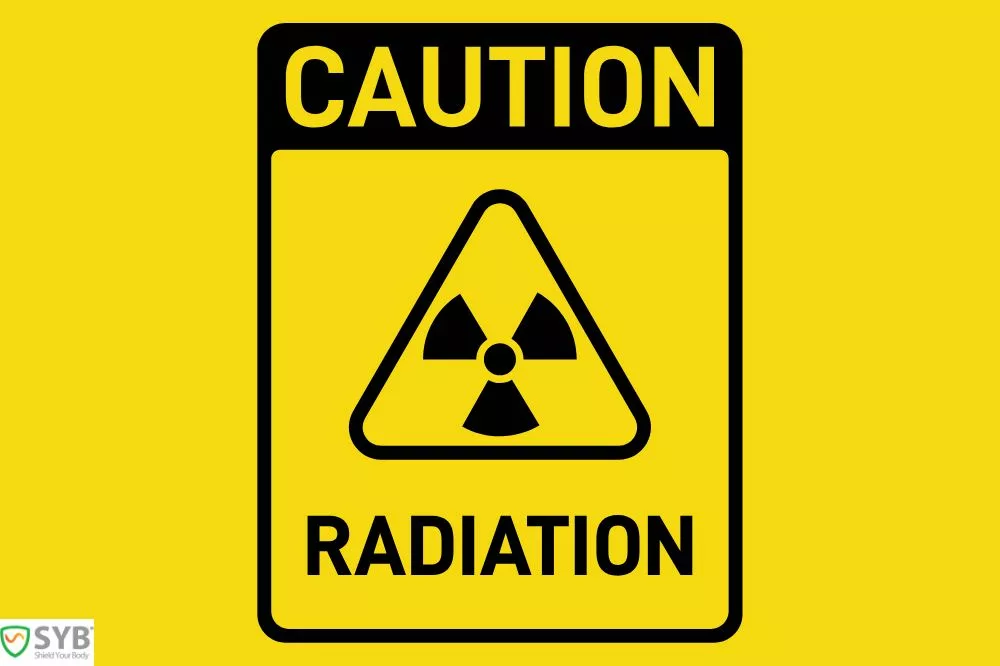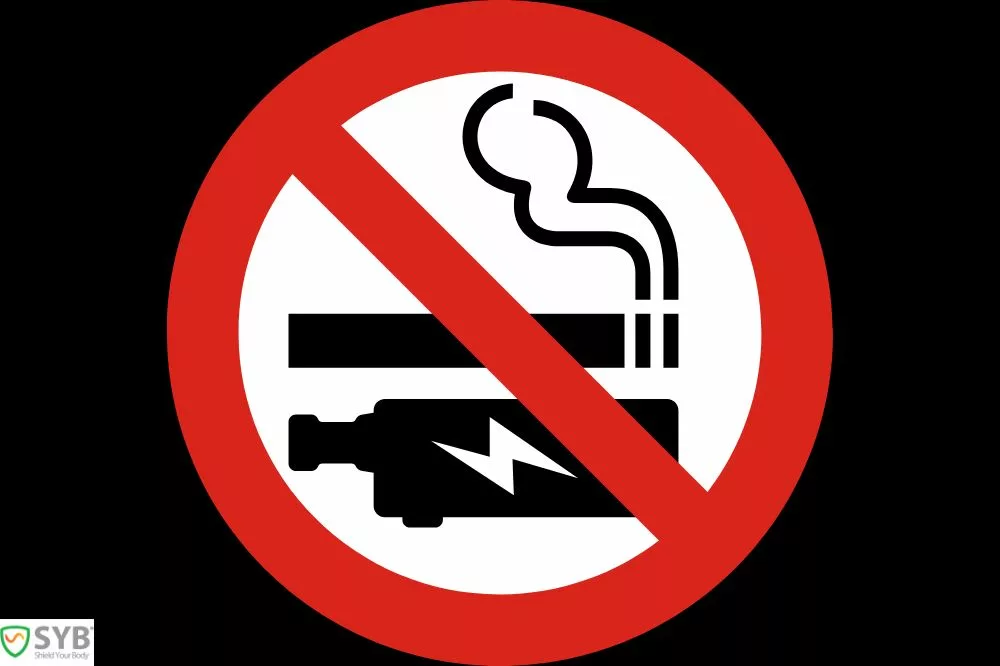Are EMFs dangerous? Some say EMF radiation"Radiation" in the context of Electromagnetic Fields (EMF) refers to the process by which energy is emitted and transmitted through space or a material medium in the form of electromagnetic... is completely safe, and some say it can wreak havoc on your health.
Every article, every YouTube video, every Quora post, every Reddit comment you open says something different.
And I can only imagine how overwhelming and frustrating all that conflicting information must be for you. Which is why I’m writing this post: to cut through the noise and clear up that doubt once and for all.
So, are EMFs dangerous? Let’s find out.
Why EMF Information Is So Confusing
The mixed messages around EMF stem from three main factors:
- Conflicting scientific findings: Some studies suggest EMF exposure is relatively harmless, while others link it to health issues ranging from minor sleep disturbances to chronic diseases like cancer. This inconsistency in research findings leaves many people questioning are EMFs dangerous or not?
- Industry influence: Just as the tobacco industry once sponsored research to downplay smoking risks, some EMF-related industries fund studies to portray EMF exposure as benign. This influence often blurs the lines between objective science and industry-backed reassurance, adding to the confusion.
- Inconsistent regulations: Different countries set their own limits for EMF exposure, and the World Health Organization’s guidelines are interpreted differently worldwide. This inconsistency leads to varying standards on what’s considered “safe,” making it even harder to get clear answers.
But before we get to these, let’s understand what EMF is in the first place.
If you’re already familiar with the concept, you can skip the next section titled “Navigating Conflicting Research on EMF.”
What Exactly is EMF? A Simple Breakdown
EMF stands for electromagnetic fields, which are invisible areas of energy"Energy" is a fundamental concept in physics, often described as the ability to do work or cause change. In everyday terms, it's what is needed to move things, heat them..., or radiation, produced by electricity.
They can come from a wide range of sources, including natural ones like sunlight and artificial ones like cell phones, WiFi routers, and power"Power" in a scientific context refers to the rate at which work is done or energy is transferred. In simpler terms, it's how fast something is using energy. For example,... lines.
Scientists categorize EMF into two main types based on frequency"Frequency" in the context of electricity, Electromagnetic Fields (EMF), and wireless communication, can be thought of as the number of times something happens in a second. Specifically, it refers to... and energy level: non-ionizing and ionizing.
Non-Ionizing Radiation: The Type We Encounter Daily
Most of our EMF exposure in daily life comes from non-ionizing sources, which have relatively low energy and are not strong enough to knock electrons off your atoms and cause immediate and permanent damage to your cells and DNA.
Some common non-ionizing EMF sources include:
- WiFi routers: These emit radiofrequency (RF) radiation, a low-energy form of EMF that can pass through walls and furniture.
- Cell phones: These emit the same RF radiation, but since we often carry them close to our bodies, the EMF exposure we get from cell phones is much more significant.
- Household appliances: Microwaves, electric stoves, and even your refrigerator emit low levels of EMF.
Ionizing Radiation: The Higher-Energy, Instantly Dangerous Type
Ionizing radiation"Ionizing radiation" refers to a type of electromagnetic radiation that carries enough energy to liberate electrons from atoms or molecules, thereby ionizing them. This form of radiation is part of..., on the other hand, is high-energy and can knock electrons off your atoms, damaging your DNA and leading to health risks like cancer.
Examples include X-rays, gamma rays, and ultraviolet (UV) radiation from sunlight.
Thankfully, the types of devices and networks we use in our homes, like cell phones and WiFi routers, do not emit this type of radiation.
So, are EMFs dangerous? Well, if we’re talking about ionizing kind of radiation, then the answer is unequivocally yes.
But if we’re talking about the non-ionizing kind, I’ll also say yes, but with caution. Here’s why.
Why Non-Ionizing EMF Still Raises Concerns
Even though non-ionizing radiation from everyday devices has far lower energy levels than ionizing radiation, research suggests it can still impact human health.
Here’s why:
Chronic exposure: Unlike ionizing radiation, which typically involves short bursts of high-intensity exposure (like an X-ray), non-ionizing radiation from our phones, WiFi routers, and appliances is more constant.
Because we’re often surrounded by these devices, they continuously expose our bodies to low-level EMF, leading to cumulative effects over time.
Biological interference: Some research studies have found evidence of prolonged EMF exposure disrupting cell communication and altering calcium ionAn ion is an atom or molecule that has an unequal number of protons and electrons, which gives it a net positive or negative electric charge. Ions are formed when... channels in our cells, impacting functions as essential as sleep regulation and cellular repair.
Sensitive populations: Certain groups, like children, pregnant women, and individuals with existing health issues, may be more vulnerable to EMF exposure.
Children, in particular, have developing nervous systems and thinner skulls, which could make them more susceptible to EMF’s effects.
But we also can’t ignore the fact that the EMF radiation exposure we get from sources like cell phones and WiFi routers, aren’t immediately harmful like ionizing radiation. And there are a ton of factors involved, like your age, your build, your exposure time, your immune system and so on.
There are a lot of nuances is what I am saying. But does that mean non-ionizing EMFs aren’t harmful? No, they are. But the kind and the amount of damage it can do to your health depends on a ton of factors.
You can learn more about the health effects of EMF in my “Health Effects of EMF Radiation” page.
Why Isn’t There a Clear Answer to Are EMFs Dangerous?
The debate over EMF safety is complex, and conflicting research contributes to public confusion.
Although thousands of studies have explored EMF’s health effects, conclusive answers remain elusive.
Here’s a look at why the research landscape is so divided and why even scientific bodies vary in their EMF guidelines.
Industry Influence: Following the “Tobacco Playbook”
One factor that muddies the waters and prevents us from getting a clear answer to ‘are EMFs dangerous’ is industry influence on EMF research.
There is evidence of telecom companies, like the tobacco industry in the past, funding some studies designed to minimize the perceived risks of their products.
SYB has done a detailed seven-post series on this. It’s called “The Business of EMF Science.” So, don’t forget to check it out.
Research Challenges: Measuring and Isolating EMF Exposure
Even if there was no interference from the wireless companies, conducting accurate EMF studies is inherently challenging.
Unlike other environmental hazards like lead or asbestos, the effects of EMF are extremely complex, if not impossible, to pinpoint because of its ubiquitous presence and the variety of sources.
Studies need precise data on the level and duration of EMF exposure individuals experience, which can vary significantly based on lifestyle and proximity to EMF sources.
Additionally, isolating EMF as a variable is complex, as people are exposed to multiple environmental factors that can also impact health.
For example, lifestyle habits, stress, and other pollutants could also influence outcomes in EMF research, making it hard to isolate EMF as the sole cause of any observed effects.
Variations in Regulatory Standards
Even reputable health organizations don’t always agree on safe EMF exposure levels, adding to the public’s uncertainty.
The International Commission on Non-Ionizing Radiation Protection (ICNIRP)The International Commission on Non-Ionizing Radiation Protection (ICNIRP) is an independent organization formally recognized by the World Health Organization (WHO). Its primary purpose is to investigate the health risks associated..., for example, has guidelines for exposure limits, but some experts argue these limits are insufficient and based on outdated research.
The World Health Organization (WHO) has classified EMF as a potential carcinogen but doesn’t mandate any strict exposure limits.
Different countries have adopted various standards, leading to inconsistencies that make it hard for consumers to know what’s truly safe.
Where Experts Agree: The Precautionary Approach
So, are EMFs dangerous or safe?
Despite the inconsistencies, many experts agree on one thing: we should adopt a precautionary approach.
The precautionary principle is based on the idea that even if EMF risks are not yet fully understood, it’s better to minimize exposure when possible.
This approach is especially recommended for vulnerable groups like children and pregnant women, as their developing systems may be more susceptible to EMF’s effects.
It may take us decades to find the “concrete proof” that people representing the interests of the wireless industry ask for. But you have to understand that the amount of research we have right now is more than enough to warrant precaution.
What’s the harm in staying on the safer side?
You don’t have to give up technology. Just use it in a safer way. And my entire website is based on how you can do exactly that.
Check out SYB EMF Healthy Living Tips for more information.
Are EMFs Dangerous? No If You Follow These Practical Tips
While today it’s nearly impossible to avoid EMF exposure entirely, there are simple, effective steps you can take to minimize your exposure.
Let’s have a look.
Increase Distance from EMF Sources
The further you are from EMF-emitting devices, the lower your exposure will be.
For example:
- WiFi routers: Keep WiFi routers in less-frequented areas, like a hallway or spare room, and avoid placing them near bedrooms or workspaces where you spend long periods.
- Phones: Use speaker mode, a wired headset, or even better, the SYB Air Tube Headphones. With these headphones, you get premium-like audio quality minus the EMF exposure. Also, avoid carrying your phone in your pocket.
- Computers and tablets: If you often use a laptop or tablet on your lap, consider a protective lap pad like the SYB Laptop Pad to create a barrier between you and the device.
Studies show that even low-level EMF exposure from close-range devices can accumulate, so using shielding products can make a huge difference.
Limit Wireless Usage and Opt for Wired Options
Wireless devices, including WiFi and BluetoothFrom the perspective of someone concerned about the health effects of electromagnetic radiation, understanding Bluetooth radiation is crucial, especially in our increasingly wireless world. Bluetooth technology, ubiquitous in our daily..., are significant sources of EMF, and minimizing their use can lower exposure.
Turn off WiFi at night: One of the easiest ways to reduce EMF exposure in your home is to turn off the WiFi router at night when it’s not in use. You can even use a timer to automate this.
Hardwire internet connections: Where possible, use Ethernet cables to connect computers and gaming devices instead of relying on WiFi. Hardwiring reduces your home’s overall EMF emissions.
Use wired peripherals: Opt for wired versions of keyboards, mice, and speakers rather than Bluetooth alternatives.
Each wireless device adds to your cumulative EMF exposure, so wired options help cut back on the total amount.
Minimize Device Usage Near the Body
Try never to use devices like your laptop and your cell phone near your body. Here’s how you can do that.
Avoid carrying your phone in your pocket: Studies show a connection between keeping phones close to the body (such as in pockets or bras) and risks to reproductive health and breast health.
Use airplane mode: When not actively using your phone or tablet, switch to airplane mode. This stops wireless transmissions while keeping other functions available, like camera and offline apps.
Keep devices out of bedrooms: Sleep quality can be compromised by EMF exposure, as studies indicate EMF may reduce melatonin production. Keeping electronic devices out of bedrooms or turning them off at night can help create a more restful sleep environment.
Are EMFs Dangerous? Use Your Judgment
Remember the basics: Minimize your use of EMF-emitting gadgets, and keep your distance from EMF sources.
Now improvise wherever you can based on these two rules.
Final Thoughts
The constant buzz of devices and wireless connections has become background noise in our lives, but we have the power to make conscious changes that minimize potential risks without sacrificing convenience.
It may take years for us to get a concrete answer to the question, ‘are EMFs dangerous,’ but by simply choosing a precautionary approach, you are taking yourself out of the debate.
Let me make it very clear, adopting a precautionary approach to EMF does not at all mean stepping back from the benefits of technology; it means moving forward with greater awareness and control.
Whether it’s placing your phone across the room at night, switching to wired connections where possible, or creating mindful boundaries around tech use, each action contributes to a healthier and more balanced lifestyle.
These small but meaningful choices can have a profound impact on your day-to-day wellbeing and your long-term health.
At SYB, we’re here to make EMF safety approachable and actionable, so that technology enhances your life rather than detracts from it.
With knowledge on your side, you’re not just adapting to the digital age—you’re thriving in it.
Embrace these steps, stay curious, and remember: you hold the power to shape a future where technology serves you, not the other way around.
So start today—make informed choices, take charge of your environment, and create a safer, healthier tomorrow. Your journey to a balanced digital life starts now.
Frequently Asked Questions
EMFs, or electromagnetic fields, are invisible areas of energy produced by electricity, coming from both natural sources like sunlight and artificial sources like cell phones and WiFi routers.
While non-ionizing EMFs have lower energy levels than ionizing radiation, research suggests they can still impact human health, particularly with chronic exposure.
Conflicting information about EMFs arises from varying scientific findings, industry influence on research, and inconsistent regulations across different countries.
To minimize EMF exposure, increase distance from devices, limit wireless usage, and avoid keeping devices close to your body.
Certain groups, such as children, pregnant women, and individuals with existing health issues, may be more vulnerable to the effects of EMF exposure.








